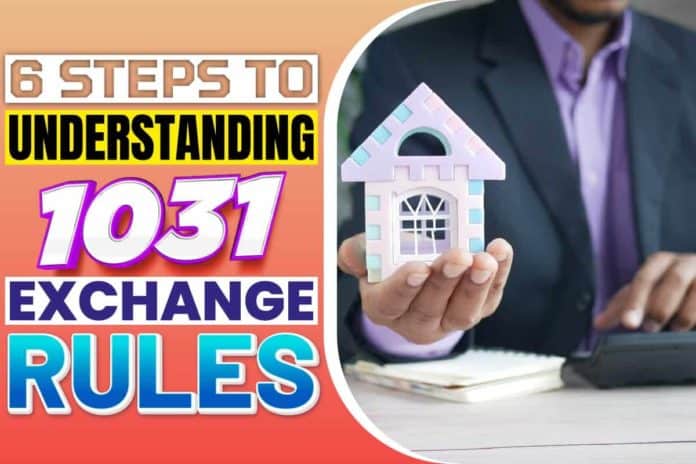Real estate investors need to understand different rules and laws that govern property investment as those laws are essential for a successful investment. Savvy investors often understand these rules, and they’ve got no problem following them. In some cases, they also use the rules or the loopholes to their advantage.
In contrast, new investors can find it hard to understand or take advantage of some laws. Fortunately, every real estate investor will understand all the rules and what they need to do with time. Also, you can get help from professionals on laws and other rules on real estate investment.
Some of the rules that an investor needs to know include taxation, state regulations, and others such as the 1031 exchange rules. Taxation and state regulations are straightforward to understand and follow, but 1031 exchange rules can be challenging. Luckily, sites like https://www.peregrineprivatecapital.com/portland-oregon-1031-exchange-services/ and others specialize in alternative investment and can help investors comprehend 1031 exchange rules.
Understanding 1031 Exchange Rules
1031 exchange rules can be a bit complicated for some real estate investors, especially for beginners. The rule has several benefits to real estate investors who want to exchange their properties, and it’d help if you understand what it entails.
The rule gets the name from section 1031 of the internal revenues service (IRS), which allows the exchange of like-kind properties, leading to the deferment of capital gains tax. The properties are usually held for business or investment purposes, and when the exchange is made, it’s with properties of that kind (business or investment purpose).
The capital gains tax is rolled over from one property to another, and you aren’t taxed until you sell your property. Even if you realize some profits through the exchange, the IRS may not tax you because you remain the same kind of investor, but with a different property.
Savvy real estate investors often take advantage of this rule to scale their investments during the exchange instead of paying the capital gain tax. However, the rule has to be followed completely to benefit; otherwise, you’ll be liable to pay the capital gain tax. Therefore, you need to follow all the required steps to understand 1031 fully.
Steps For Understanding 1031 Exchange Rules
To fully understand the 1031 rules, you need to familiarize yourself with some critical steps and regulations. At the end of these steps, you’ll know some of the benefits and any risks that you may encounter as an investor if you choose 1031 for your property.
1. Know The IRS Definition Of 1031 Exchange Rule
You’ll probably come across many definitions of the 1031 exchange rule. These are a variation of how the IRS defines the rule and everything entailed in it. So, the first step of understanding how the rule works is getting the proper definition by the IRS.
The IRS under section 1031 states that the exchange happens between like-kind businesses. When you exchange a property held for business or investment purposes for another property held for business or investment purposes, it qualifies as a like-kind exchange, so the 1031 exchange rule takes effect.
The IRS also exempts investors from reporting any capital gains or losses through the exchange, unless they sell the property or exchange it for another property of a different kind.
2. Know What Properties Are Eligible
The IRS identifies real estate properties as like-kind, so you can exchange one property with another, regardless of the quality difference or size, and still qualify for the rule. For example, an investor with a small rental apartment can exchange for a larger or commercial property without paying for the capital gain tax. However, other property assets such as machinery and equipment aren’t covered under this section and won’t qualify for the 1031 rule.
One of the major issues raised on the properties that are eligible for 1031 exchange is vacation homes. Over time, it has been common for people to turn their vacation homes into permanent residences during retirement or into rental properties. If a vacation homeowner wants the home to qualify for 1031, the home should first be turned into a rental property, and a tenant should live there for some time. This qualifies it as an investment and can be exchanged for another investment property and defer the capital gain tax.
3. Get An Intermediary
One of the rules of being eligible for a 1031 exchange is getting an intermediary to conduct the exchange on your behalf. Failure to work with an intermediary will make the investor liable to capital gain tax as the exchange will count as a sale.
During the sale, the intermediary will receive the money from the sale of the property instead of the owner. The intermediary will also purchase the investment property on behalf of the investor. When looking for a qualified intermediary to hold the funds from the sale of the previous property, it’s good to work with referrals from your agent or lawyer. However, your lawyer, agent, or someone previously affiliated with you can’t work as an intermediary during the exchange.
4. Be Aware Of The Timeframes Of The Exchange
Because finding a property of the same kind and a person willing to sell is usually complicated, there are some delays regarding the exchange. The IRS allows for some time within which the designation of the exchange property is done and a period within which the exchange should be closed.
If there’s a delayed exchange, you’ll need a qualified intermediary who’ll conduct the exchange on your behalf. After you sell the property, you’ll give the cash to the intermediary who will then buy a new property on your behalf, completing the exchange.
When an intermediary is involved, the two timeframes and the close of the exchange that should happen are the following:
- 45-Day Rule
After selling your property, you’ll have 45 days to designate the replacement property to the intermediary. The designation should be in writing, and you can designate up to three properties as long you close on one of them. During the sale of your home, the intermediary will receive the money on your behalf. If you receive the money, it violates section 1031 and won’t qualify as an exchange.
- 180-Day Rule
After selling your property, you’ll have 180 days to close the replacement property through the intermediary. The 180 days start from the time of sale and not after the 45 days of designation. So, if you take 45 days to designate the replacement property, you’ll only have 135 days left to close the property.
5. Be Familiar With The 1031 Exchange Types
While 1031 is a general rule and describes the like-kind properties that can be exchanged, investors still use different kinds of exchanges. These types are used depending on the nature of the exchange, and they could be instant or delayed.
Here are some of the exchange rules:
- Delayed Exchange
In this type of rule, the purchase of the replacement property delays. The IRS gives a window within which the replacement property should be closed. It takes 45 days for designation and 180 days to complete the purchase.
- Simultaneous Exchange
A replacement property is often bought immediately after the previous property is sold. There are no delays in this type of exchange.
- Reverse Exchange
There are some cases where the investor can acquire the replacement property before selling the previous property they owned.
- Delayed Built-To-Suit Exchange
When the investor sells a property, the person replaces the property with another built to suit his needs.
- Simultaneous Build-To-Suit Exchange
The replacement property that’s built to suit the investor is purchased before the current property is relinquished. Knowledge about the different types of 1031 exchanges will help you know which suits you the best and which is allowed and practiced by other investors.
6. Understand The Financial Implications
1031 exchange program will have different financial implications on taxes and mortgages. As discussed, the 1031 exchange rule is beneficial to investors who want to roll over the capital gain tax as much as possible until they eventually sell the property. However, there are some cases where the investor will still pay the tax capital gain tax even after qualifying for the 1031 exchange.
First, if the previous property was worth USD$2,000,000 and the replacement property is acquired at USD$1,900,000, then the intermediary will pay the investor a boot of USD$100,000. This boot will be counted again and subjected to capital gain tax.
However, the capital gain tax resulting from a boot in the 1031 rule is less than the capital gain tax as a result of a direct sale. So, investors using the exchange will have more money to develop properties than investors who sell directly.
Conclusion
One rule of investment is reducing costs as much as possible. Taxes are part of the costs that real estate investors will seek to reduce to generate much revenue from their investment.
All investors should first understand the 1031 exchange rule and all the fine details outlined in the section. These proper steps will guide you into understanding and benefiting from the rule.












